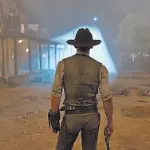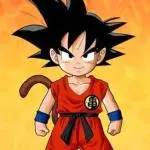“Rashomon” was adapted by renowned playwright Shinobu Hashimoto from the short story “In a Grove” by acclaimed author Ryunosuke Akutagawa in 1921. It is a ground-breaking work by the master director Akira Kurosawa and is hailed as one of the "10 Most Valuable Films in History," shining brightly even after half a century.
In my personal opinion, the reason why "Rashomon" has such a tremendous impact lies in its profound film theme. Indeed, the film centres on a solitary criminal incident, exploring the shadowy facets of human nature and highlighting the unpredictable and enigmatic qualities inherent in human beings. However, the humanistic twist at the end transforms the initial despair towards the entire world and doubts about objective truth into an emphasis on trustworthiness, praising the triumph of humanitarianism and the revival of morality. On the other hand, it is also due to its unique filming techniques. The monologues of the four characters intertwine, weaving together the main storyline and demonstrating innovative and thought-provoking techniques.
In reality, the ability of a film to evoke the most profound imagination within a confined space is a question that preoccupies many directors. Rashomon presents such a possibility.

Filming Technique 1
Capturing Chaotic Scenes to Convey Symbolic Meaning
Throughout the entire film, we can see various symbols: the dilapidated city gate, the mysterious and terrifying forest, the continuous heavy rain, the unpredictable murders, as well as the thief, woodcutter, samurai, and monk. These symbols are interconnected to form a divergent web, a web that contains no definitive content. It is more accurate to say that there is no intact fish within this web, or in other words, nothing within it is certain. The shattered Rashomon gate stands defiantly within the frame, and within such a potent and contradictory setting, everything that unfolds is destined to be incomprehensible.

Shooting Technique 2
Recreating Different Situations of the Same Event
The film portrays the different conclusions reached by several individuals regarding the killing of a samurai through the testimonies of five people in the courtroom and the casual conversations of a wandering monk, a woodcutter, and a handyman seeking shelter from the rain.
The bandit Tajomaru claims that he did not kill the samurai. According to him, the samurai was defeated in a duel and died a half-defeated death. Tajomaru boasts about the samurai's exceptional martial skills, highlighting his own extraordinary prowess.
The deceased samurai, speaks through the mouth of a witch and states that he committed suicide with his wife's dagger. He died when his last breath was taken away after someone pulled out the dagger embedded in his chest.
The samurai's wife, Masako, confesses that she accidentally killed her husband while trying to protect him by thrusting the dagger into his embrace.

The woodcutter, however, claims that Masako instigated a duel between her husband and Tajomaru, resulting in her husband's death at the hands of Tajomaru. He also disputes Tajomaru's exaggerated claims about their martial skills. This conceals the fact that he himself removed the dagger from the samurai's chest.
As for the capture of Tajomaru, his own statement contradicts that of the police. The police claimed that Tajomaru fell off his horse and was then apprehended by them. However, Tajomaru stated that he had drunk water from a spring that had been poisoned by a snake, and he was captured by the police after being poisoned.
Furthermore, when several individuals recount their experiences, they all do so in the same location, with the same background and environment. This creates a sense of being present at the scene and builds anticipation, as the audience is eager to know the truth.
By presenting different accounts from multiple individuals, the original scene is reconstructed. We have seen this filming technique in later works such as "Hero" and "Run Lola Run." This technique, to some extent, personally speaking, allows the audience greater room for imagination and contemplation.

Shooting Technique 3
Simple Composition, Detailed Shots
The scenes in Rashomon are only focused on four locations: Rashomon Gate, the forest, the police station, and the riverbank. However, the crucial scenes take place in the forest. Out of the 417 shots, the forest alone accounts for 293 shots, which is nearly three-quarters of all the shots.

Especially remarkable are the fast-paced shots of thief Tajomaru running through the bushes, which are the most exciting parts of the whole film. Here, I will list a couple of them.
First scene: Tajomaru chasing the samurai and his wife (the shots mainly focus on their heads and entire bodies).
Second scene: Tajomaru leading Masako to the samurai's location (the shots mainly focus on their foot movements, and the lighting is also very well done).
The most distinctive aspect of shooting these scenes is that it makes the audience unaware of the camera's presence. Instead, it feels like the audience's eyes are following the action.

Rashomon comprises a total of 53 scenes and incorporates 417 shots. With this abundance of shots, the editing process becomes incredibly intricate. Some shots are gentle and accurate, capturing nuanced details, while others fleetingly capture moments in time. The meticulous editing of these numerous shots results in a fast-paced and tense narrative, characterized by a compact storyline and swift character movements, expertly constructing the entirety of the film.
Rashomon isn't just a narrative film; it transcends mere storytelling. Its significance lies not only in its portrayal of multiple perspectives on a single event but also in its ability to provoke profound philosophical contemplation about the very essence of the story. Through the abundant use of symbolism and minimal dialogue, it showcases the darkness within human beings in extreme circumstances, giving the film a strong poetic quality. I am deeply thankful to the master director Akira Kurosawa for bestowing upon us the timeless classic Rashomon.
















































Share your thoughts!
Be the first to start the conversation.